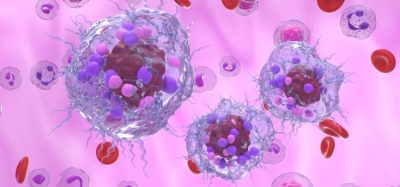Nanoscope gene therapy data signals potential retinal disease advancement
Posted: 18 August 2025 | Catherine Eckford (European Pharmaceutical Review) | No comments yet
Further to its potential in Stargardt disease, if approved, the one-time gene therapy could become standard of care for retinitis pigmentosa, alongside other retinal degenerative diseases.


Nanoscope Therapeutics has announced that a first-of-a-kind study has demonstrated vision improvement in individuals with Stargardt disease.
The genetic eye condition, also known as juvenile macular dystrophy, is a major cause of vision loss in children. The Phase II STARLIGHT study evaluated six participants given an intravitreally injected gene-agnostic MCO-010 (sonpiretigene isteparvovec) therapy.
MCO-010’s mechanism of action enables highly dense bipolar retinal cells to become light sensitive, according to Nanoscope.
Notably, the gene therapy provided an improvement in mean visual acuity of 12 ETDRS letters over 48 weeks in patients with atrophy confined to the macula. No serious adverse events were reported and the treatment well tolerated.
Nanoscope also observed that some patients experienced vision improvement as early as four weeks post-treatment, which was maintained throughout the study duration.
Advancing gene therapy research in retinal diseases
this is one of the first studies to demonstrate vision improvement in Stargardt disease patients. This is a remarkable finding as these patients typically experience irreversible central vision loss over their lifetimes”
Dr Byron Lam, Professor of Ophthalmology at Bascom Palmer Eye Institute, lead author and principal investigator of the STARLIGHT study added: “While this was an open-label study, this is one of the first studies to demonstrate vision improvement in Stargardt disease patients. This is a remarkable finding as these patients typically experience irreversible central vision loss over their lifetimes.”
Nanoscope plans to begin a Phase III trial in Stargardt disease by the end of 2025. Further to the Phase II STARLIGHT study, top-line results for the STARGAZE Phase III study are expected in 2027.
This recent data from the STARLIGHT clinical trial was published in eClinical Medicine.
These findings from Nanoscope follow other recent advances in the vision loss treatment space. In May this year, for the first time, the US Food and Drug Administration (FDA) approved a continuous delivery treatment shown to maintain vision in diabetic retinopathy. Susvimo (ranibizumab injection) 100mg/mL only requires a nine-monthly refill required, supporting provision of durable treatment options.
Related topics
Clinical Development, Clinical Trials, Drug Delivery Systems, Drug Development, Gene therapy, Industry Insight, Research & Development (R&D), Therapeutics









